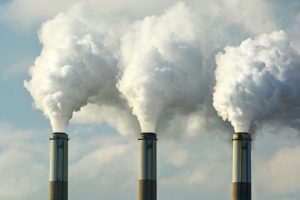I was walking through my home village, on a route I had followed for years, at least three times a week. Yet I was feeling my way along, with my hands on someone’s fence. I knew where I was only by the texture and form of the fence, and even then I was uncertain…
There’s not much difference between fog and a low-flying cloud. Normally one can see some feet ahead, at least one’s hand in front of one’s face. When it comes to smog, though, everything is different. Smog is fog combined with air pollutants. It can incapacitate those with lung problems, and cause lung problems for those who previously did not.

It can also get one very, very lost. Although not in London, I was having my first experience of a London pea-souper.
Efforts along “clean air” lines have, in much of the world, ended what in London were called “pea soupers” – smog so thick that you can see through it about as well as you can see through pea soup. However, recent attempts to limit or overturn the clean air laws concern me. Let me explain some of my experience with London pea soupers, which, occasionally, would spread 50 to 60 miles beyond the city.
The first paragraph, above, involved a time when I was trying to get to choir practice one evening. (I was a teenager, and choir practice at least got me out of the house one evening a week.) The walk usually took less than ten minutes, and I knew the road like the back of my hand… or so I thought. Yet that evening the smog was so thick that I became totally disoriented. Yes, I really did have to feel my way along the fences and hedges that fronted each of my neighbors’ homes. Usually, in the dark of night I could just see where my hand was if it was in front of my face. In this case, in the early evening, I could not.
I got to the church – and back – but the experience certainly did not prepare me for what I encountered when I moved to London (one of several cities sometimes referred to as “the big smoke”) a few years later.
It happened that I counted among my London friends a number of people for whom cycling was the normal form of transportation and a way of life. I soon learned that, when needed, some of them also served as guides when the London smog was so bad that the drivers of the tall, double-decked London buses could not see the curbs, the road surface lines, or the street signs that usually guided them. As thousands of commuters depended on the buses this was serious business.
Enter the cyclists.

Because they were nearer the ground than the bus drivers, and did not have reflections from the bus windows to distract their vision, they could just make out the street signs, the road surface signs, and the curbs in even the worst of smogs. they would gather at London Bridge, and each would negotiate with a bus driver for a fee to guide him to his destination. Youngsters who had lived all their lives in the city, they knew the twists and turns, and each would ride ahead following the intended route, pausing occasionally to check with the bus driver to be sure that they were the driver thought they should be. Away from the smogs, cyclists and bus drivers were hardly the best of friends, but in times of need they cooperated so that the buses and their impatient passengers got to their destinations, usually more than a little late, but they got there. Meanwhile the cyclists, most of them chronically short of cash, benefited in that way.
It sounds ridiculous now, but it happened.
Even more surreal was an incident involving the fire engine (as they are known in the U.K.). I was, very cautiously, walking from the Underground (subway) station to my nearby home after work. I heard the fire-siren behind me, approaching unusually slowly. A few moments later I saw a glow approaching. It turned out to surround a flaming torch held aloft by a man running along the white line in the middle of the road. Behind it, guided by the glow, was a fire engine on its way to a fire emergency, travelling only as fast as the man could run. As I wondered where the fire was, the vehicle stopped. The runner mounted the steps to a house to peer at the street number on the door. Having discovered how far along the road they were, and so how far they had yet to go, he returned to the white line and continued his journey, cautiously followed by the fire engine. I never did discover whether they got to the fire in time to save the house, or any lives.
Of course that happened many years ago. Today, our GPS systems would let us know how far along our journey we were, how far remained, and where to turn, should smogs occur again. We would not have to rely on a running man with a flaming torch. What, though, would warn us of that other vehicle approaching from the other direction as each of us tried to rely on the hardly visible street signs, curb sides and surface signs? Let us hope that the “clean air” laws will survive efforts to dilute them, so that we will never again have to put that thought to the test.
(“Adventures with Smog” is part of a new series, “That was Then and This is Now” which will appear intermittently in addition to my regular (or irregular when life intrudes) blog. To sign up for my newsletter “Work in Progress” see the form ti the right of the pages of this website.)
Leave a Reply